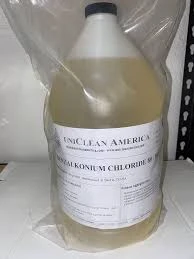flocculant types
Understanding Flocculant Types A Comprehensive Overview
Flocculants play a critical role in various industrial processes, particularly in water treatment, mineral processing, and waste management. They are chemical substances that promote the clumping or agglomeration of particles into a floc or flake, allowing for easier removal from liquids. Choosing the right type of flocculant is essential for optimizing processes, reducing costs, and achieving desired levels of clarity in treated water or effluent. This article delves into the different types of flocculants, their mechanisms, and applications.
Types of Flocculants
Flocculants can generally be divided into two major categories organic and inorganic flocculants. Each category contains various types that cater to specific applications.
1. Organic Flocculants Organic flocculants are predominantly synthetic polymers. They consist of long chains of molecules that can bond with suspended particles to form larger aggregates. The most common types include
- Polyacrylamides (PAMs) These are widely used in water treatment and have high efficiency in reducing turbidity. They can be found as anionic, cationic, or nonionic based on their charge properties. Anionic PAMs are effective for negatively charged particles, while cationic PAMs are suitable for positively charged particles.
- Natural Polymers Derived from natural sources, such as starch, alginates, and cellulose, natural flocculants are biodegradable and less toxic. They are increasingly favored for environmentally conscious applications, particularly in food processing and wastewater treatment.
2. Inorganic Flocculants Inorganic flocculants are salts or metal hydroxides that work by destabilizing colloidal suspensions. Common inorganic flocculants include
- Aluminum Sulfate One of the oldest and most widely used inorganic flocculants, aluminum sulfate effectively removes turbidity by forming aluminum hydroxide when it reacts with water. It’s extensively used in municipal water treatment.
- Ferric Chloride This flocculant is utilized in various applications, including wastewater treatment and sludge dewatering. Ferric chloride is effective in coagulating organic and inorganic materials due to its high charge density.
- Calcium Hydroxide Known as lime, calcium hydroxide can neutralize acidic waters and precipitate harmful heavy metals. It’s particularly valuable in mining and metallurgy.
flocculant types

Mechanisms of Action
Flocculants generally function through a process involving charge neutralization and bridging. In charge neutralization, flocculants neutralize the electric charges on suspended particles, allowing them to come closer together and stick to one another. Bridging occurs when the long polymer chains of organic flocculants physically connect two or more particles, forming larger aggregates or flocs.
Applications
Flocculants are integral to numerous industries
- Water Treatment Municipal and industrial water treatment facilities routinely use flocculants to improve water clarity by removing sediments and contaminants.
- Mining and Mineral Processing Flocculants are employed to separate valuable minerals from ore and enhance the recovery of metals.
- Paper and Pulp Industry They are used to improve fiber retention and ensure clear filtrate during the papermaking process.
- Oil and Gas In drilling and production processes, flocculants help manage waste and enhance the separation of oil from water.
Conclusion
Selecting the appropriate flocculant type hinges on several factors, including the nature of the suspended particles, the specific application, and environmental considerations. Understanding the various flocculant types and their mechanisms can lead to enhanced efficiency and performance in industrial operations. Ultimately, careful consideration of these factors enables industries to make informed decisions that contribute to sustainability and operational success.
-
Understanding Polycarboxylic Acids: Properties, Applications, and Future PotentialNewsJul.28,2025
-
Scale Inhibitor Explained: How to Protect Your System from Limescale and Hard Water DamageNewsJul.28,2025
-
Scale and Corrosion Inhibitors: Essential Chemicals for Industrial Water System ProtectionNewsJul.28,2025
-
Polyaspartic Acid: A Biodegradable Polymer for Sustainable ChemistryNewsJul.28,2025
-
Isothiazolinones: A Versatile Antimicrobial Class with Industrial Power and Regulatory ChallengesNewsJul.28,2025
-
A Deep Dive into 2-Phosphonobutane-1,2,4-Tricarboxylic Acid (PBTC)NewsJul.28,2025





